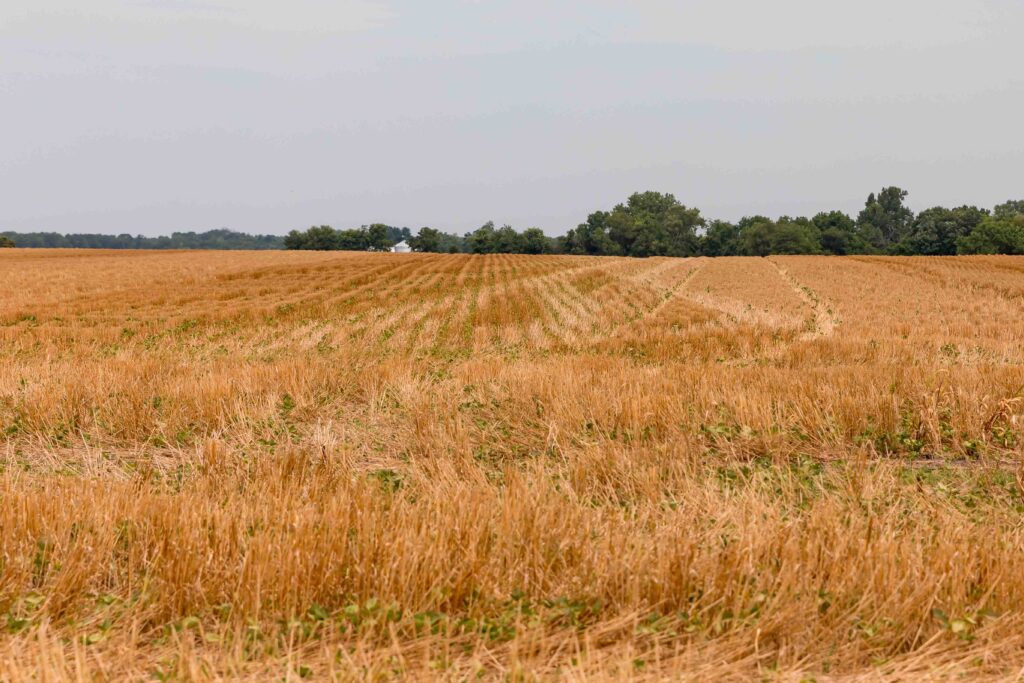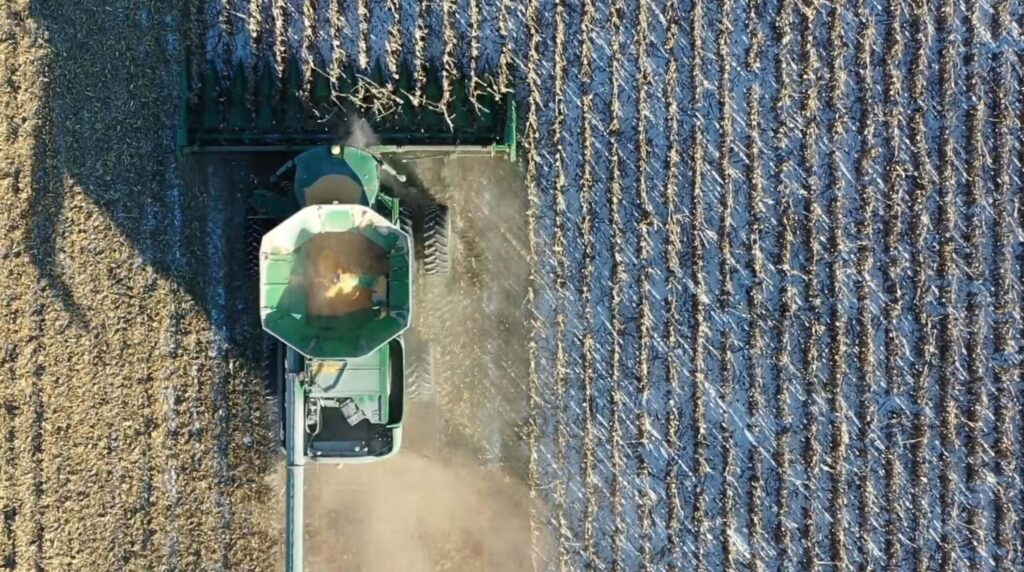Reviewers
Masie Keshavarz, Senior Research Project Manager, Purdue University
Erin Robinson, Marketing Manager, Purdue University
Article
Double cropping as an adaptation to climate change in the United States by Matthew Gammans, Pierre Mérel and Ariel Ortiz-Bobea
Source
Gammans, Matthew, Pierre Mérel, and Ariel Ortiz-Bobea. 2025. “Double Cropping as an Adaptation to Climate Change in the United States.” American Journal of Agricultural Economics 107(2): 532–557. https://doi.org/10.1111/ajae.12491
Summary
U.S. farmers are increasingly challenged by unpredictable weather patterns – more frequent droughts, extreme rainfall and rising temperatures. In response, some are turning to double cropping – a practice that involves planting and harvesting two crops on the same land within a single growing season. This practice holds potential as a potential solution to these challenges, but it also comes with trade-offs.
This study examines the practice of planting winter wheat followed by soybeans – a common double cropping system in the U.S. The authors found that a 3°C increase in temperature could expand the geographic feasibility of double cropping, particularly in cooler regions, leading to a 2.1 percentage point increase in the area of soybeans grown following wheat. However, the benefits are not without drawbacks: double-cropped soybeans typically yield about 12% less than those grown alone, and the revenue gains are modest – only about 1.3% on average. This offsets just a small portion of the expected yield declines due to climate change.
While double cropping may contribute to climate resilience in some areas, its success depends on a range of factors: weather patterns, local temperatures, soil quality, water availability and effective crop management. Additionally, economic factors like input costs and market prices play significant roles in adoption decisions.
Farmers will need to consider a combination of approaches, including technological innovations and policy support, to effectively respond to the evolving challenges of climate change.
What does this mean for food and agricultural business?
For agribusinesses, this research offers both a caution and a call to innovate. Double cropping has its fair share of challenges, but the findings highlight valuable opportunities, especially when paired with advances in technology, product development and policy support. Here are some key takeaways:
- Emerging Demand for Adapted Inputs: Double cropping may drive demand for seeds, fertilizers, pesticides and other inputs designed for shorter growing windows or variable climate conditions. Agricultural businesses can respond by developing new product lines or promoting inputs tailored for drought-resistant or fast-maturing crop varieties.
- Increased Focus on Water Management: Agricultural companies offering water-use optimization tools, soil moisture sensors or irrigation systems could see a surge in demand, especially in regions where double cropping is being adopted as a climate adaptation measure. This might also create opportunities for partnerships with water management organizations or government agencies focused on sustainable water use.
- Growth in Precision Agriculture Solutions: Double cropping requires careful management of planting schedules, water usage and harvesting times. Agtech companies that offer precision agriculture tools, such as drones, GPS-guided systems or crop-monitoring software, will have an increased opportunity to market these solutions to farmers looking to optimize their operations. Businesses that offer weather forecasting or yield prediction software can also provide critical value.
- Labor and Workforce Management: Two growing seasons can strain labor availability. Agribusinesses that offer labor solutions, training programs or automated farming technologies (e.g. harvesters, planters) could play a role in helping producers scale double cropping practices efficiently.
- Risk Management and Insurance: With higher intensity farming like double cropping comes higher risk – whether from market volatility, crop diseases or climate extremes. Agricultural insurers and financial service providers will need to adapt their coverage options to support farmers managing the risks of multiple harvests in a single season.
- Opportunities in Crop and Market Diversification: Double cropping could also lead to crop diversification in certain regions, opening the door to new supply chains and markets. This could benefit agricultural businesses involved in food processing, transportation and supply chain management to expand their portfolios and distribution opportunities.
Double cropping represents one possible path toward greater climate resilience and productivity in U.S. agriculture, but it’s not a one-size-fits-all solution. While it may provide incremental benefits in certain regions, its limitations in yield of double-cropped soybeans and its modest increase in revenue suggest that farmers and businesses must consider a combination of approaches. These may include adopting new technologies, improving crop management practices and staying informed about policy developments. Collaboration with researchers, policymakers and other stakeholders will be essential in developing sustainable strategies that support l ong-term agricultural productivity and profitability.





